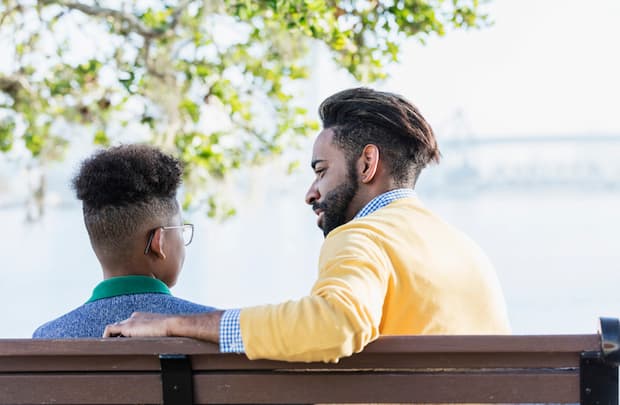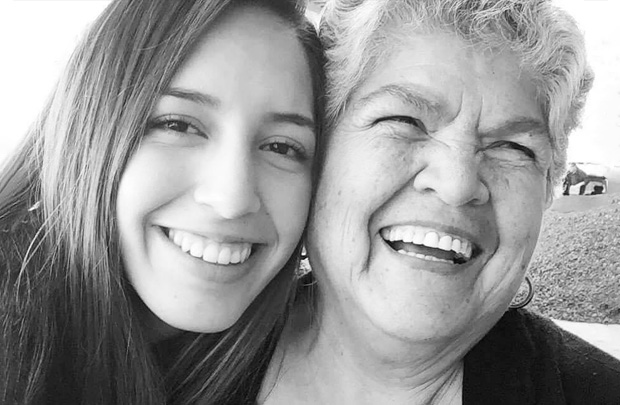
In this interview, Sarahi Juarez talks to AdoptUSKids about adverse childhood experiences (ACEs).
Sarahi works for the Department of Health and Welfare in Idaho, based in Boise. She has researched ACEs in her professional work and experienced them first-hand as a child.
What are adverse childhood experiences?
Adverse childhood experiences, commonly known as ACEs, happen before you turn 18. They include things like neglect, abuse, and experiencing the divorce of parents.
ACEs can shape people’s lives. If someone has a high ACE score, they’re more likely to suffer from things like heart problems and substance misuse, as the CDC explains on their website. These experiences can also affect mental health.
Notably, foster care is an “expanded ACE,” according to a research study in PubMed. There are ten main ACEs. Outside of that, there are expanded traumatic experiences. Foster care is one of these because it is traumatic for a child to be removed from their home. When they are placed in the child welfare system, children and youth see many people they don’t know. That’s scary for anyone and can be very traumatic for a child.
So, foster and adoptive parents should understand that their child has experienced the potential adverse experience of being in foster care and may have experienced others as well. But there are ways they can help!
What is the role of one caring adult in the lives of children and youth?
When a child is growing up and going through trauma, the constant of a caring adult makes all the difference. This is an idea that was first talked about by author and speaker Josh Shipp.
According to the Center on the Developing Child’s A Guide to Toxic Stress, “The single most common factor for children who develop resilience is at least one stable and committed relationship with a supportive parent, caregiver, or other adult.”
A caring adult can:
- Prevent the experience of trauma even if a child is exposed to an adverse experience
- Reduce the impacts of trauma after an ACE has occurred
Caregivers and other mentors may not see their impact day-to-day. Yet, when children grow up, they’ll use what they learned from adults to be resilient.
Who can be a caring adult, and what can they do to help?
Support can come from anyone, be it a parent, a mentor, a teacher, or someone who just shows interest in that child or teen. Ask the youth what they need and let them know you’re there to listen. Show that you genuinely care.
(See “Ways to help,” where AdoptUSKids provides information about being a CASA, providing mentorship, and being a respite care provider.)
Any advice for current and prospective foster and adoptive parents?
I recommend parents start talking about ACEs in their communities. It’s important to be open to learning.
There’s also an ACEs assessment on the NPR website that anyone can take. It shows where you lie out of ten points. You can take the quiz with your teen or for your child.
Caregivers may find it helpful to look within themselves to see if they’re experiencing any underlying trauma; adults might not realize they’ve gone through adverse childhood experiences. And for prospective foster parents, the assessment may help them decide whether they’re ready to take on a placement.
You openly discuss experiencing ACEs as a child. Who was your one caring adult?

I scored a ten for ACEs, which is the highest. Before I turned 12 years old, I had all the ACEs that you can think of.
My grandparents stepped in and took me into their care for two years. In fact, my one caring adult was my grandmother. I truly think that, if it wasn’t for her, I wouldn’t be where I am today. She showed up for me, and she taught me how to be resilient. She often quoted something that I carry with me. She said, “What you do today will determine your future.”
It’s a simple statement, but she said that because I was playing with fire. She didn’t want me to take the dark path, so she told me to continue being resilient.
Is there anything else your grandmother did that made you feel supported?
Yes! She let me make mistakes. That’s one of the things I’m grateful for even to this day.
For example, she’d invite me into her kitchen and say, “Come help me cook or bake.” Growing up, I didn’t have much of that. I was scolded if I did anything wrong.
It was pivotal for me when she stepped in and said, “No, I want you to come learn with me. Who cares if you make a mistake? You’ll learn from it.” I realized I was allowed to grow.
Having her in my corner made all the difference.
What would you say to youth in foster care who, like you, have experienced ACEs?
For youth who are reading this and for adults to pass on to the children in their care, I’d say:
- Be open to help. I know it’s hard. I know the last thing you want to do is be vulnerable and open with another adult in your life, especially when you’ve been constantly let down. It is hard, but be open.
- Know that you’re not alone. Even though you may feel like it—and it may feel like the end of the world—don’t give up on yourself. There is more to life after you start building your resiliency. I think it’s hard to see, but I promise that there is a light at the end of the tunnel.
Anything else?
Start having the conversation about ACEs. Talk about them with your neighbors, with your friends, and with your family. I guarantee it will be a great conversation!
And then, keep learning. AdoptUSKids also has some great articles about trauma, which are shown below.
Further reading about trauma from AdoptUSKids
- “Helping a child through a crisis” provides tips for managing a crisis, understanding trauma triggers, making a plan, and using self-soothing methods.
- “Is it lying or confabulation—and how should I respond?” covers the causes of confabulation, how to help your child understand what this is, and strategies you can use when your child isn’t telling the truth.
- “Understanding children’s behavior and helping them heal” discusses the neurological causes behind behaviors, sensory triggers, and ways to help your child.